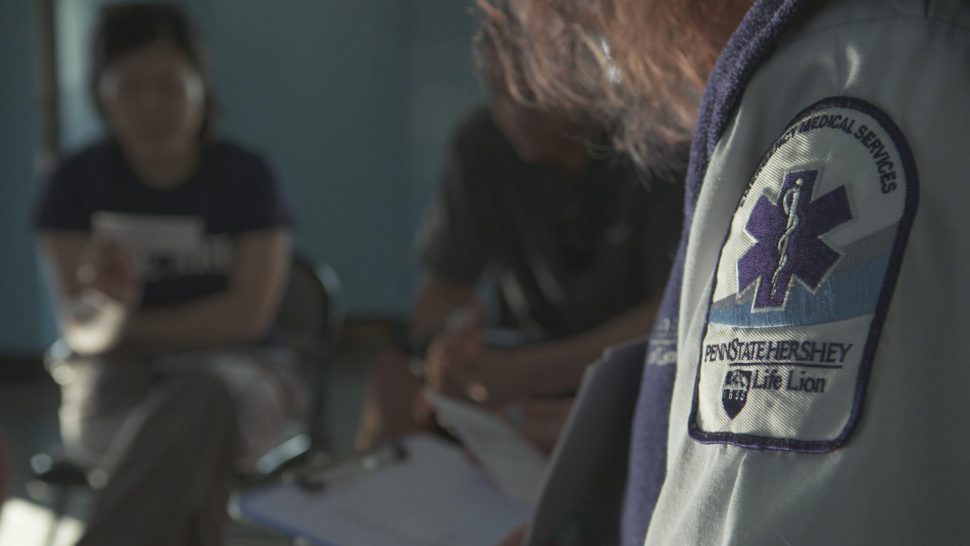John Tolley, October 28, 2017
Guiding his box truck down a busy street, the driver feels a tingling in his arm and an uneasy tightness spreading across his chest. Before he has time to process what is happening, his breath grows short. He tries to brake, but he loses consciousness and slumps over the steering wheel, his foot on the accelerator. The pedestrians in his path have no time to get out of the path of the now speeding truck.
The images you are seeing are from a simulated event, but if they seem unsettlingly realistic, that is by design. Detailed and thorough, mock scenarios help train the students, doctors and nurses at Penn State?s Milton S. Hershey Medical Center to be prepared to jump into action whenever and wherever disaster strikes.
The training exercises are the brainchild of Dr. Jeffrey Lubin, Division Chief for Pre-Hospital and Transport Medicine at the Hershey Medical Center. For Lubin, the experience is crucial for equipping medical professionals for the challenges they will face.
?When I teach emergency medical services to our trainees, I want them to be hands-on,? he explains. ?I want them to get dirty, to get sweaty, to really have the experience. [To do that] you have to suspend your disbelief and make it as real as possible.?
In the heat of the moment, the trainees are forced to work with limited resources and make split second decisions regarding the triage of patients. As Lubin points out, it is important that the trainees learn to separate their ?emotional, visceral response? from their medical knowledge. It?s a skill that must be developed to work well under pressure, and the exercises at Hershey go a long way towards reinforcing it.
?Doing these activities, I learned to navigate through some of the emotions and noise,? says Maude Kettenman, a second-year emergency medicine resident at Penn State. ?You don?t have a stethoscope or other assistive devices. It?s really just looking at the people, thinking about the mechanism of injury, doing some very quick assessments and determining what I could potentially do with very limited equipment.?
The exercises, such as the above described Mass Casualty Incident (MCI), also allow young doctors to experience working with a range of first responders. Lubin and his team coordinate with their local fire department, police and paramedics to not only make the scenario realistic, but authentic.
Lubin is quick to note that most of the physicians and nurses that participated in the MCI exercise will likely never be confronted with a serious pre-hospital event like the one staged for them. But, for the vast majority that will practice within the walls of a hospital, it is still valuable to understand how events transpire prior to patients being brought to the emergency room.
?The impact and the real importance of it is for them to understand what happened at the scene and how chaotic it can be,? Lubin explains. ?They get to know the kind of care someone might or might not have received and why. That is something that they will carry with them throughout the rest of their careers.?







